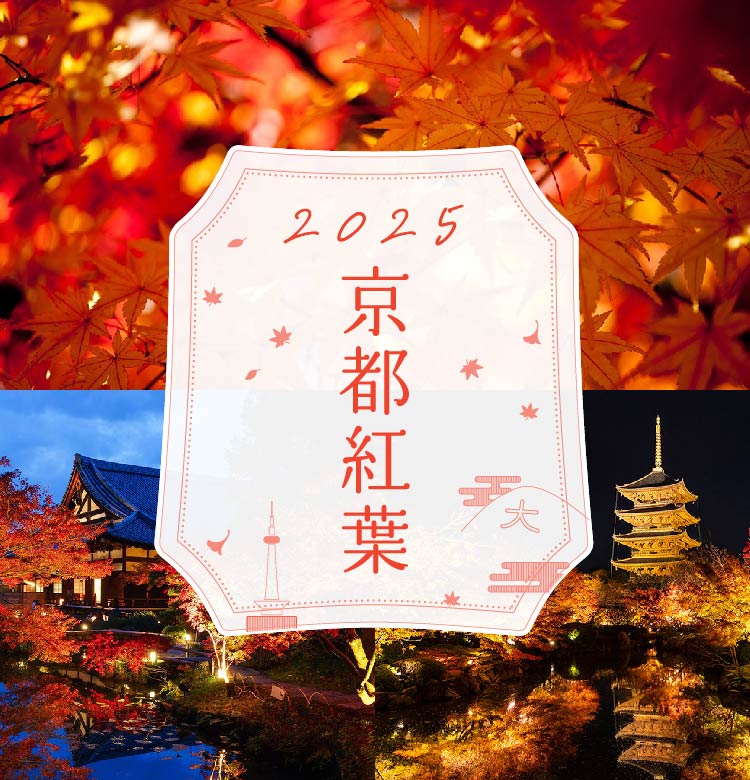
[2025]京都紅葉情報!名所から穴場までおすすめ...
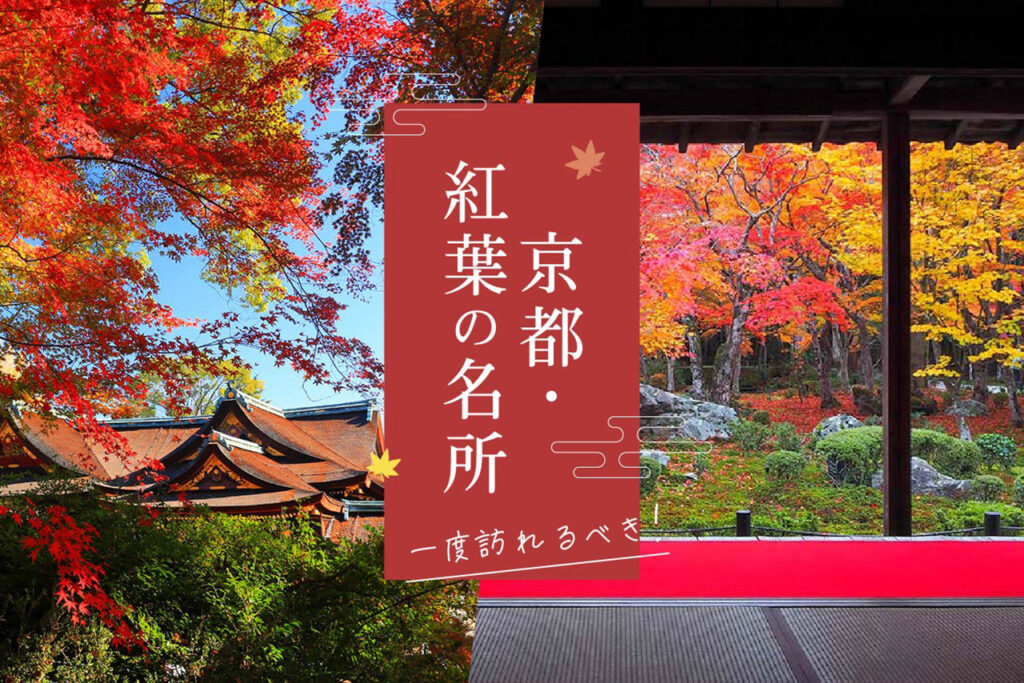

秋の京都は、全国的にも知られる紅葉の名所が点在する人気観光スポット。[清水寺]や[東福寺]、[永観堂]など何度訪れても感動が待っているような圧倒的な美しさを誇る紅葉の名所があります。見頃の時期に合わせて訪れれば、鮮やかに色づく紅葉や夜間ライトアップを楽しむこともできます。爽やかな秋晴れのなか、彩やかな紅葉を愛でてみて。
正式名称を[禅林寺]といい、弘法大師(空海)の弟子である真紹僧都が真言密教の道場として、仁寿3(853)年創建。古来より「モミジの永観堂」と称される紅葉の名所であり、シーズンには約3000本のモミジが池泉回遊式庭園や多宝塔などを鮮やかに彩る。秋の昼には寺宝展、夜には入替制でライトアップが開催される。
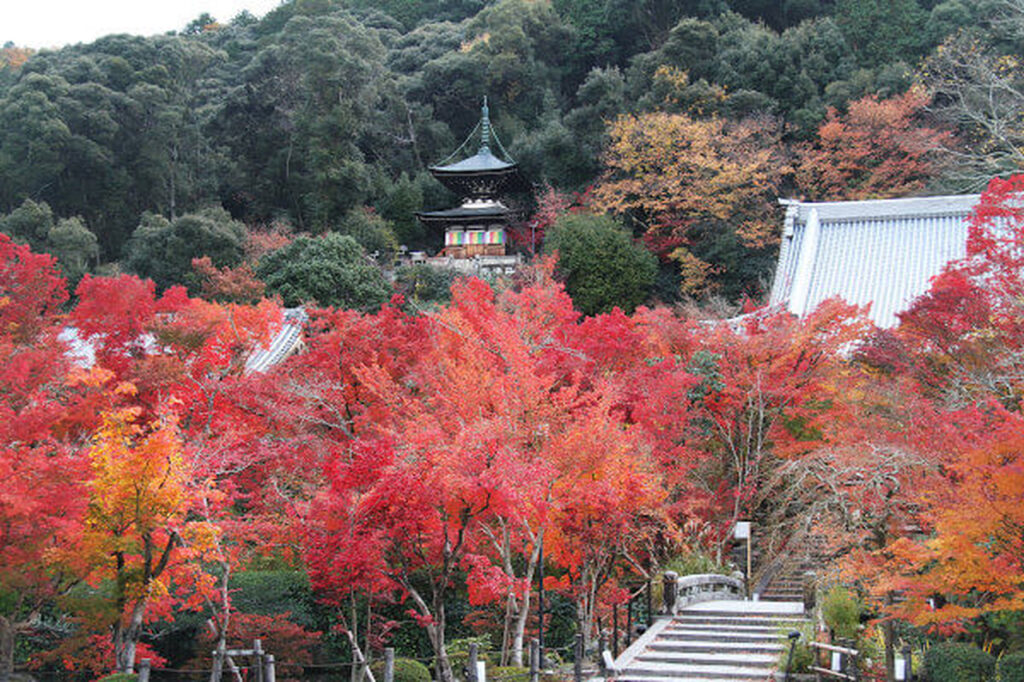

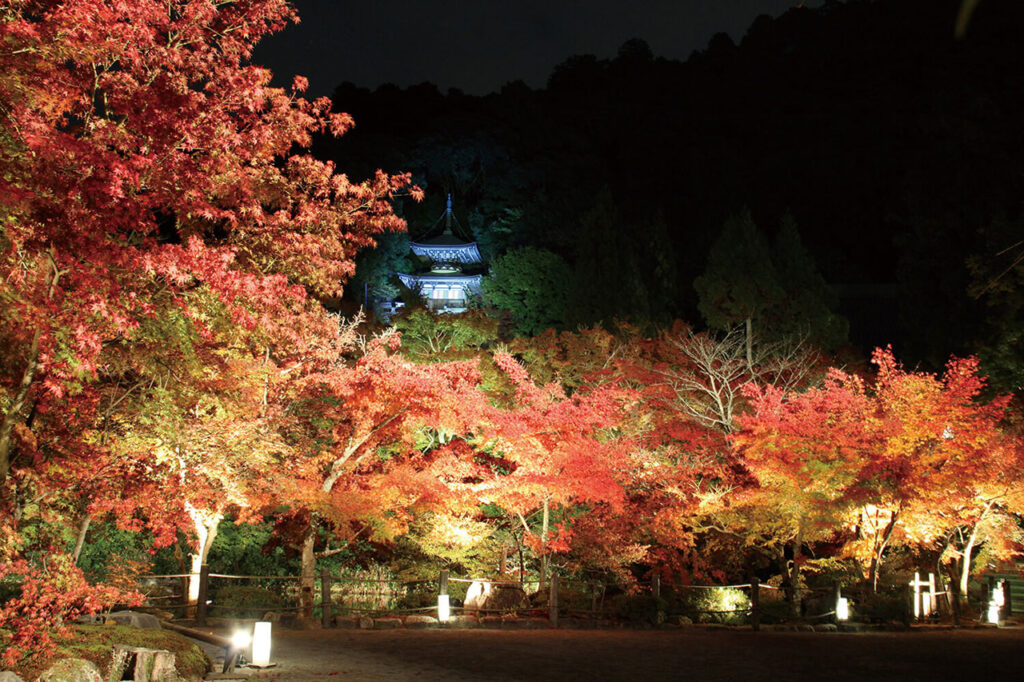

Best time to see/usually mid-November to late November
■秋の寺宝展
Period/2025年11月11日(火)〜12月10日(水)
Hours.9:00-17:00 (last admission at 16:00)
Charge/大人1000円、小中高生400円
■ライトアップ
Period/2025年11月15日(土)〜12月10日(水)
Hours./17:30~21:00(最終受付/20:30)
Charge/中学生以上700円
※障がい者手帳を提示で寺宝展拝観料の割引有
窓口で手帳の提示が必要(ライトアップは割引対象外)
※寺宝展とライトアップは入替制(継続での拝観不可)
壮大な伽藍を誇る臨済宗東福寺派の大本山[東福寺]。紅葉の名所としても知られる境内にある通天橋から、11月中旬~下旬は雲海が広がるような見事な紅葉が望める。約2000本のイロハモミジやトウカエデなどで紅や黄色の多彩な色に染まる渓谷は、息をのむほどの美しさ。
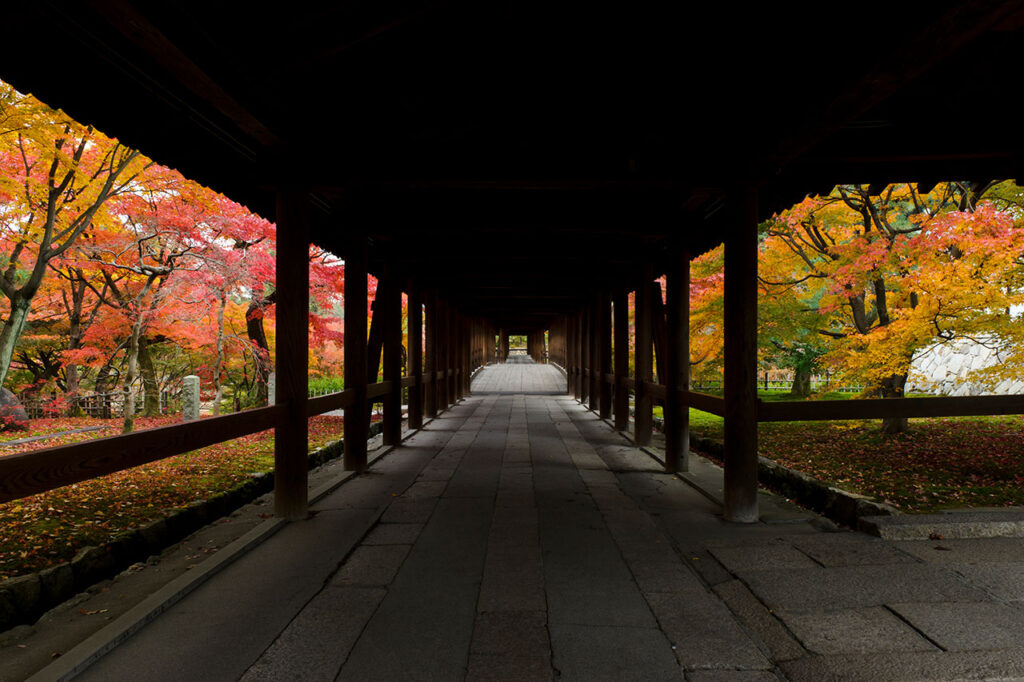

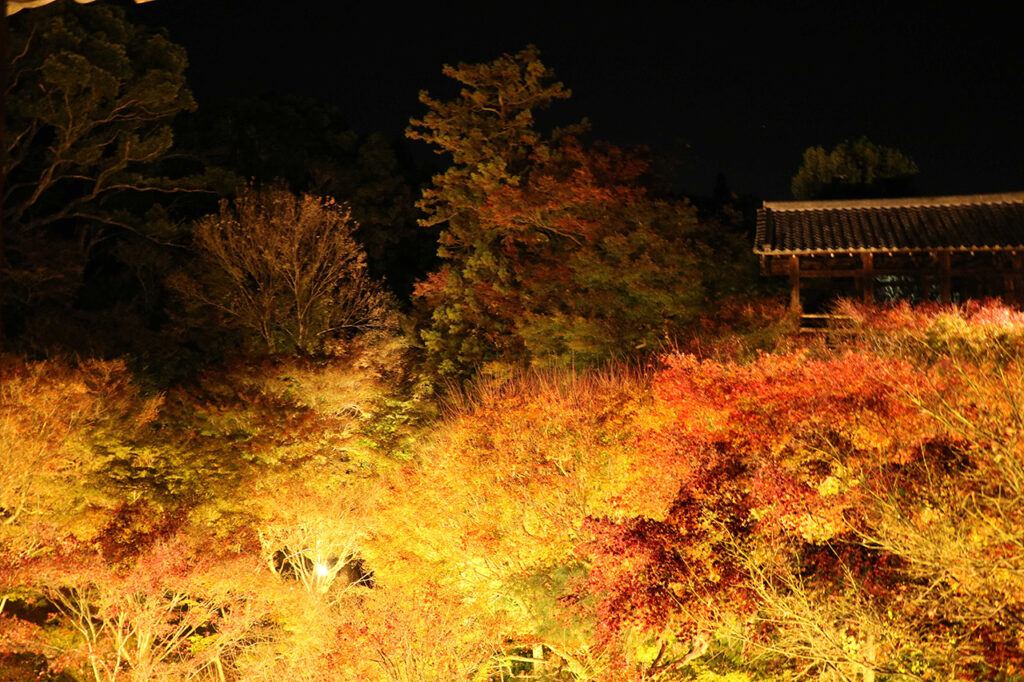

Best time to see/usually mid-November to late November
Visiting hours
April to end of October / 9:00 to 16:30 (last entry / 16:00)
11~12月1日/8:30~16:30(最終受付/16:00)
12月2日~3月末/9:00~16:00(最終受付/15:30)
admission fee
Tsutenkyo/Kaizando/adults 600 yen, children 300 yen
Tofukuji Honbo Garden (Hojo) / Adults 500 yen, Children 300 yen
※11月9日~12月1日は大人1000円、子ども500円
Tofukuji Honbo Garden (Hojo), Tsutenkyo Bridge, Kaisando (common admission ticket) / 1000 yen for adults, 500 yen for children
※11月9日~12月1日は共通拝観券の販売なし
■看楓特別拝観 通天橋公開
Period/2025年11月15日(土)~12月7日(日)
Hours./8:30~16:30(受付終了/16:00)
Charge/通天橋・開山堂1000円、本坊庭園500円
■看楓特別拝観 三門・龍吟庵公開
Period/2025年11月8日(土)~12月7日(日)
Hours./9:00~16:30(受付終了/16:00)
Charge/龍吟庵1000円、三門1000円
■早朝特別拝観
Period/2025年11月20日(木)〜12月8日(月)
Hours./7:30~8:30
Charge/1800円
*For inquiries, please contact JR Tokai.
■夜間拝観
Period/2025年11月19日(水)〜12月7日(日)
Hours./17:30~19:30(受付終了/19:00)
Charge/2,800 yen
※完全予約制 ※お問い合わせはJR東海まで
清水の舞台で知られる京都を代表する寺院の一つ[清水寺]。11月下旬から12月初旬にかけては、約1000本のモミジやヤマモミジが紅葉し、境内を赤く染め上げる。特に奥の院と清水の舞台で知られる本堂とのコントラストは必見。夜間の特別拝観では、境内がライトアップされ幽玄な雰囲気に包まれる。
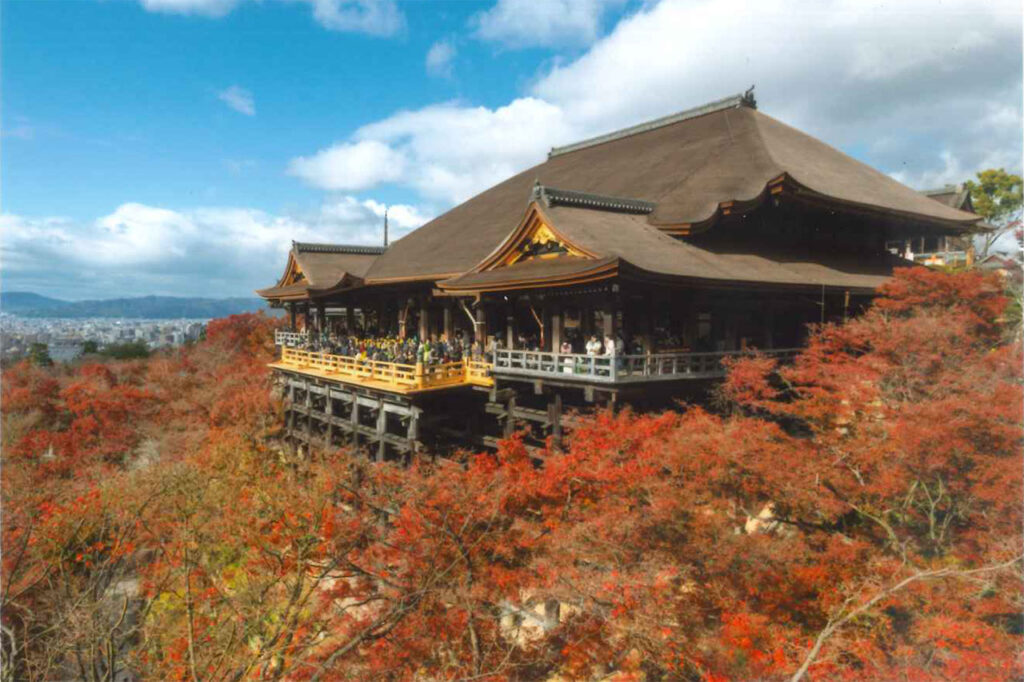
Main hall *Courtesy of Kiyomizu Temple

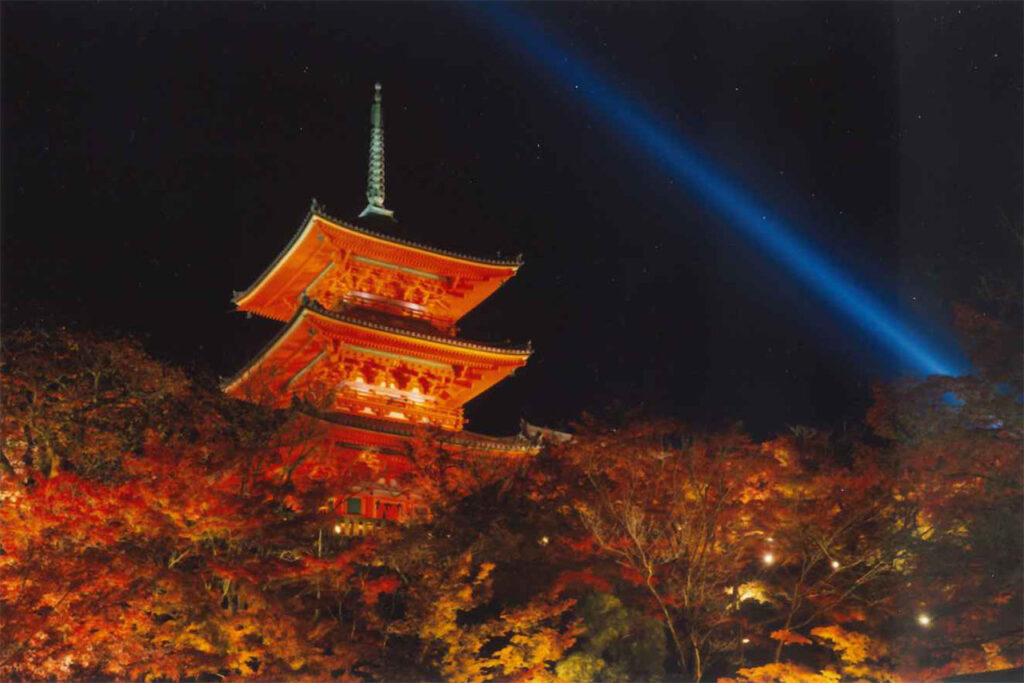
Three-story pagoda *Courtesy of Kiyomizu Temple

Best time/usually late November to early December
Visiting hours/6:00-18:00 (subject to seasonal variations)
admission fee/大人500円、小中学生200円
成就院特別拝観/2025年11月22日(土)〜12月7日(日) 9:00〜16:00、18:00〜20:30(最終受付) 大人600円、小中学生300円
夜間特別拝観/2025年11月22日(土)〜12月7日(日) 17:30〜21:00(最終受付) 大人(高校生以上)500円、小中学生200円
Sanzen-in Temple in Ohara, Kyoto, is one of the five monasteries of the Tendai sect of Buddhism, and is said to have been founded between 782 and 806 (Enryaku era) by the great Buddhist priest Saicho, known as "Enryu-bo," in the south valley of the east pagoda, one of the sixteen valleys of the three pagodas on Mount Hiei.
The leaves usually change color from mid to late November, and the maple trees in the garden on the temple grounds turn brilliant colors. The sight of red and orange leaves falling on the moss is exceptionally beautiful.
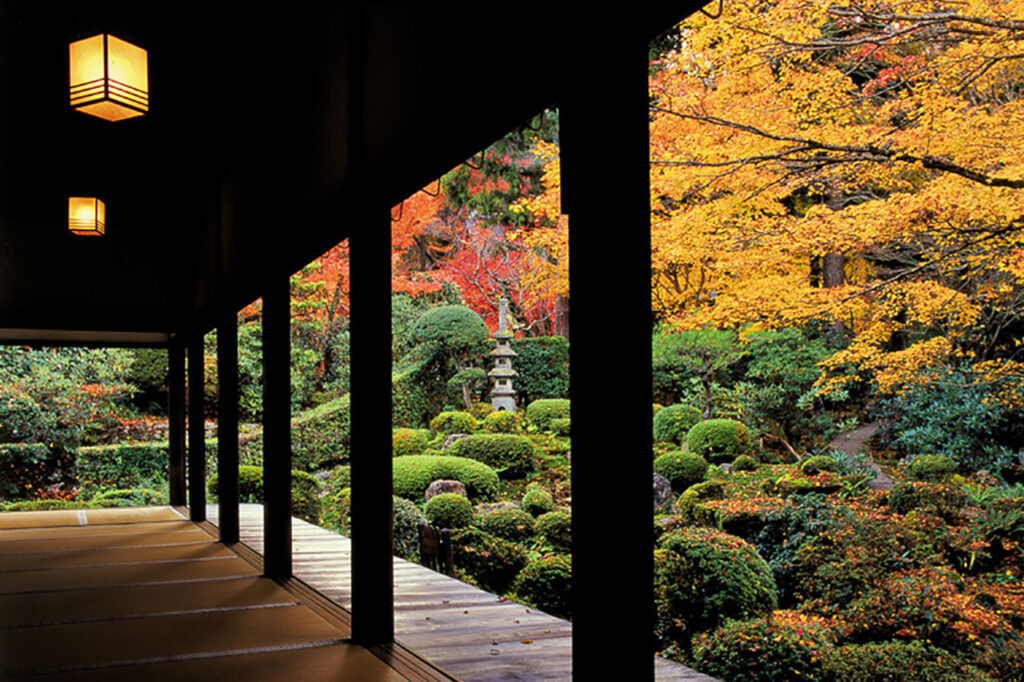

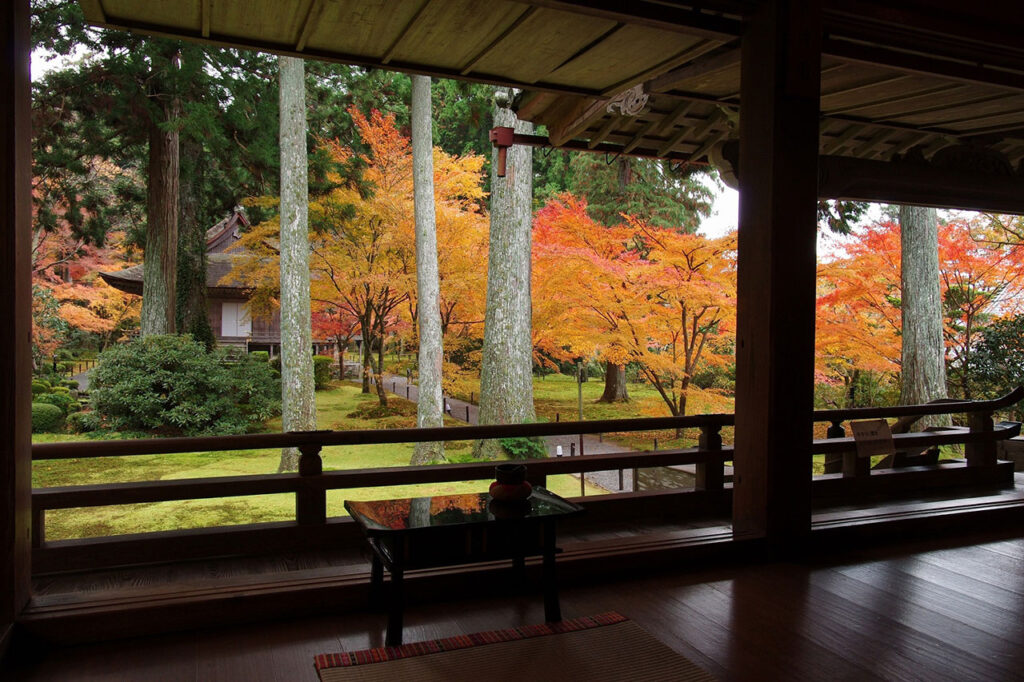

Best time to see/usually mid-November to late November
Autumn Special Viewing "Maple Festival
秋の特別拝観期間/2025年10月28日(火)~12月7日(日)
拝観受付時間/10月 9:00~17:00、11月 8:45~16:45
Admission/ Adults 700 yen, Junior and senior high school students 400 yen, Elementary school students 150 yen, Free for infants
[Normal visit]
Hours of admission/9:00-17:00 (November/8:30-17:00, December-February/9:00-16:30)
Admission fee: 700 yen for adults, 400 yen for middle and high school students, 150 yen for elementary school students
水の供給をつかさどる高龗(たかおかみ)の神を御祭神とする[貴船神社]。11月上旬には朱塗りの春日灯篭が並ぶ参道の頭上を紅葉のアーチが覆い、ひと際美しい空間を楽しめる。紅葉のライトアップでは、灯りに照らされたもみじが昼間とは違う美しさを放つ。
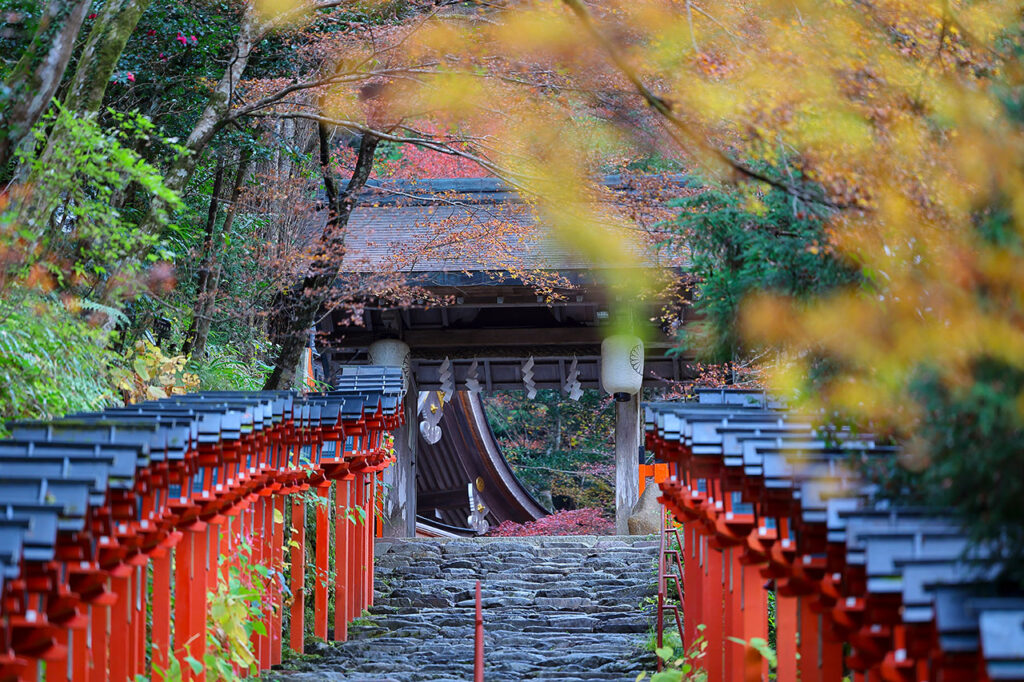

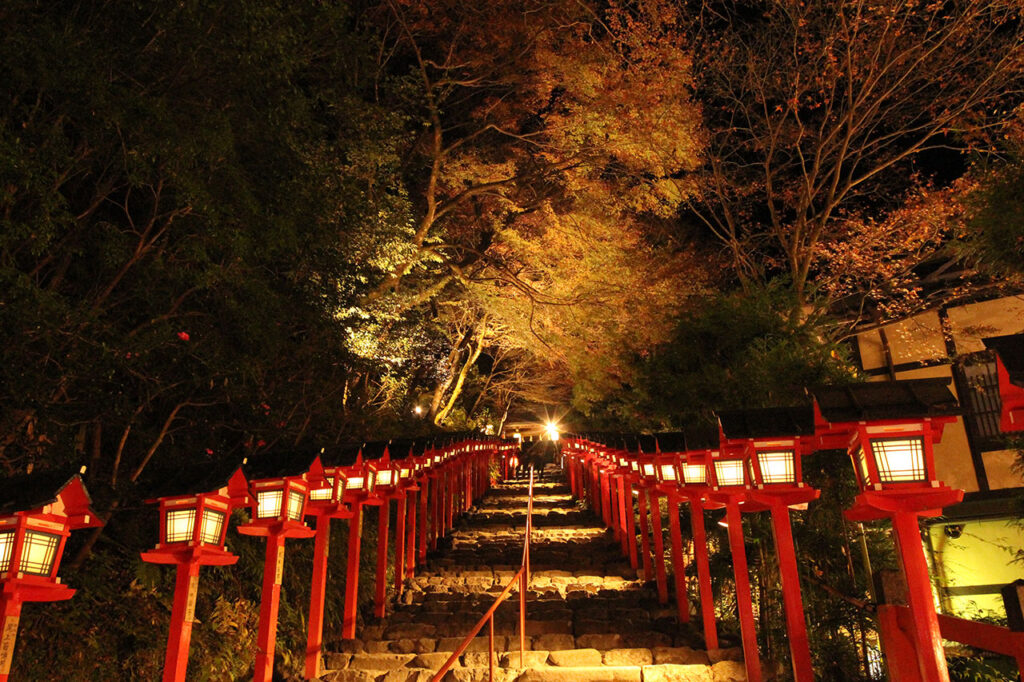

Best time to see/usually mid-November to late November
拝観時間/6:00~20:00(12月1日~4月30日は~18:00)
■秋の特別拝観『貴船神社 紅葉ライトアップ』
Period/2025年11月7日(金)〜11月24日(月・祝)
Hours./夕暮れ~20:30
ChargeFree of charge
学問の神様として有名な菅原道真公(菅公)を祀る[北野天満宮] 。菅公が詠んだ歌は小倉百人一首の24番で、錦のように美しい紅葉を眺めた感動を読み取ることができる。桃山時代に豊臣秀吉公が築いた御土居は約350本の紅葉を有する「もみじ苑」となっており、人気の観光地のひとつだ。
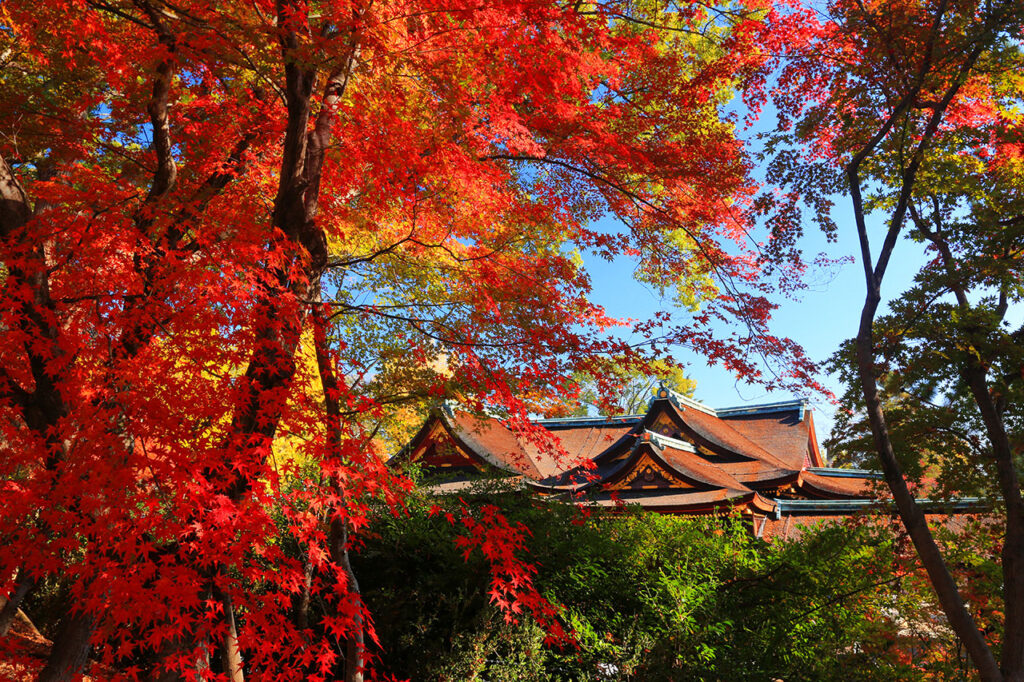

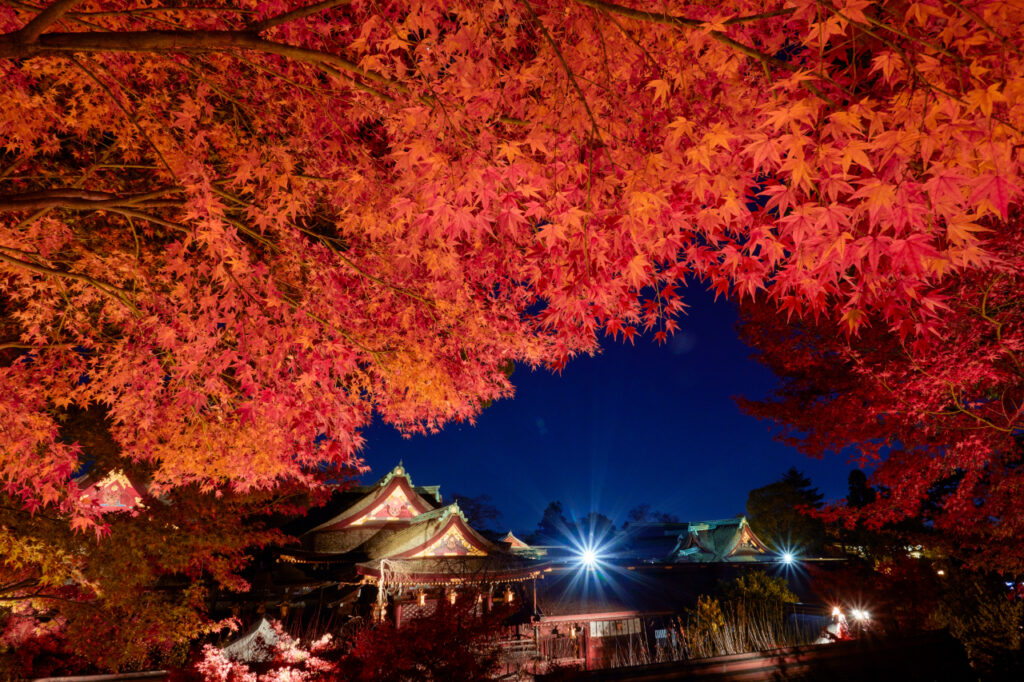

Best time to see/usually mid-November to late November
Hours of visitation/7:00-17:00
■「もみじ苑」秋の特別公開
Period/2025年11月1日(土)~12月7日(日)
Hours./9:00~20:00(最終受付/19:40)
Charge/大人1200円 小人600円(茶菓子付)
■ライトアップ
Period/2025年11月1日(土)~12月7日(日)
Hours.Sunset - 20:00 (last admission at 19:40)
Charge/大人1200円 小人600円(茶菓子付)
No day/night changeover
JR山陰線の旧線を利用した観光列車[嵯峨野トロッコ列車]。車窓の向こうに壮大な景色が流れゆく、嵐山〜亀岡間約7.3kmの列車旅は感動の連続。車窓から間近に眺める色鮮やかな紅葉や保津川峡谷のダイナミックで幻想的な景色を贅沢に楽しめる。特に5両編成のうち1車両のみとなる窓ガラスのない「ザ・リッチ号」の爽快感は格別。紅葉の保津川渓谷をより美しく彩る嵯峨野トロッコ列車のライトアップも必見。
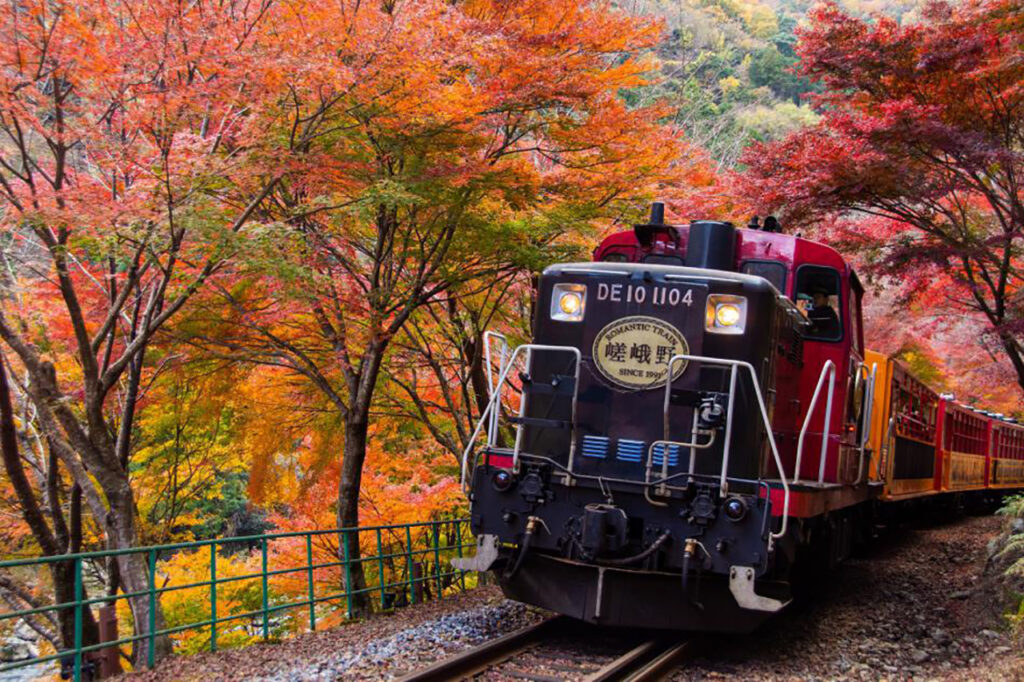

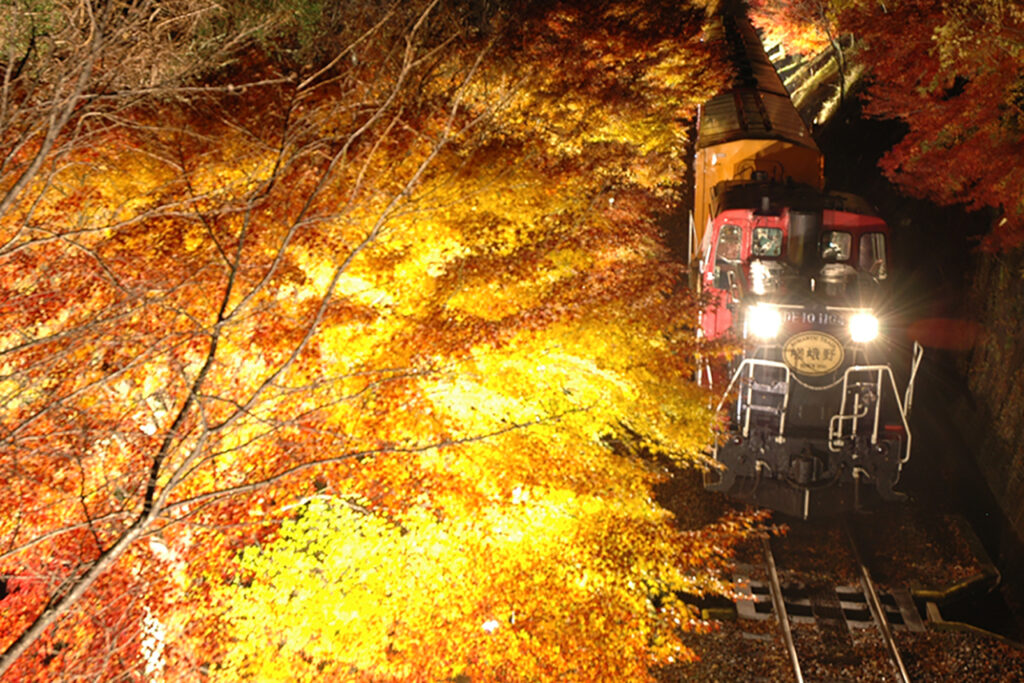

Best time to see/usually mid-November to early December
Operating hours/Official website operation scheduleThan
運賃(片道)/大人880円、小児440円
■光の幻想列車
運行期間/2025年10月25日(土)~12月29日(月)
運行時間/トロッコ亀岡駅16:30発~最終列車まで
運賃(片道)/大人880円 、小児440円
This temple was founded by Ieyasu Tokugawa in 1601, and has the oldest Buddhist scripture woodcut in Japan. It is also known for its collection of prominent Japanese art, such as Unkei's "Sende Kanonzo" and Maruyama Oken's "Chikurinzu Byobu". Suryu Pond, which is said to be the oldest in Rakuhoku, and Suikinkutsu, which has a pleasant sound, are must-sees.
In addition, the autumn leaves and fresh greenery of the garden, which you can see from sitting in the study room, are as beautiful as a painting.
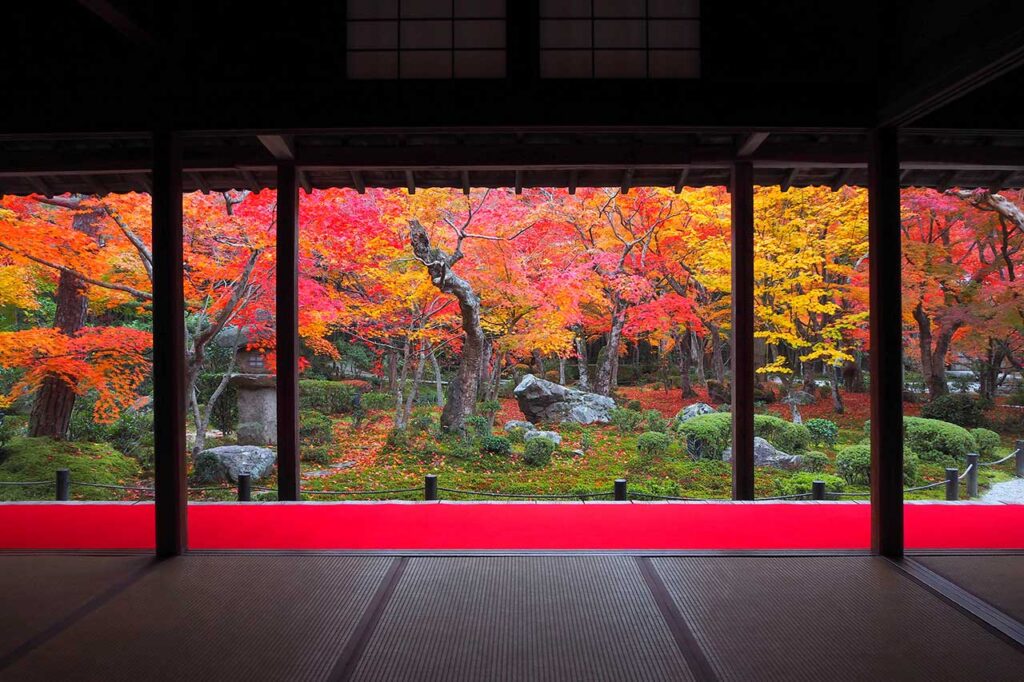

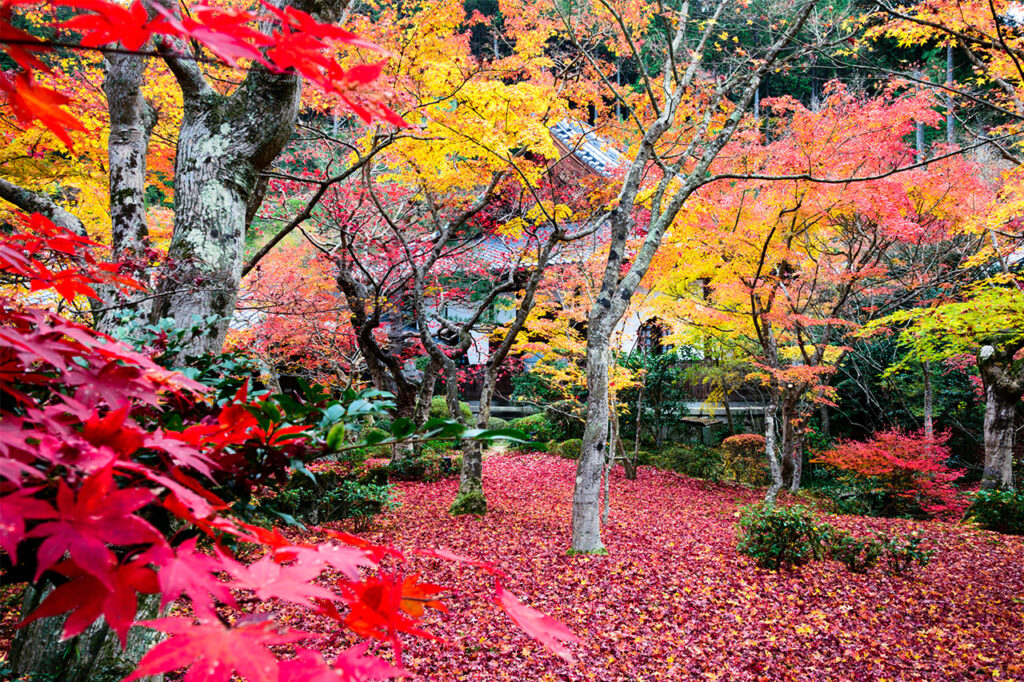

Best time to see/usually mid-November to early December
『令和7年秋の紅葉特別拝観』
拝観期間/2025年11月10日(月)〜12月10日(水)
Visiting hours/8:00-17:00
拝観料/大人1500円、小人800円
[Normal visit]
Visiting hours/9:00-17:00
拝観料/大人800円、小人500円
1603(慶長8)年に江戸幕府初代将軍・徳川家康が築城した[二条城]。紅葉の名所としても知られ、イチョウやカエデなどの多彩な木々が美しく色づく。夜間は[NAKED meets 二条城 2025 観月]を開催。重要文化財・唐門や内堀には壮大なプロジェクションマッピングが施され、紅葉とネイキッドのデジタルアートで会場を彩る。
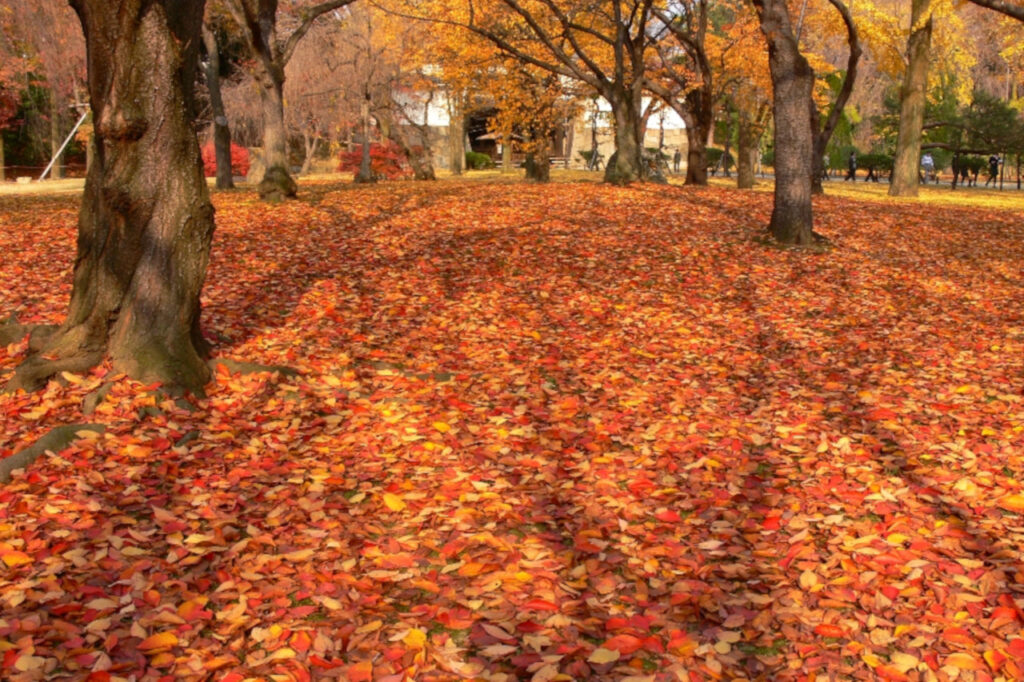

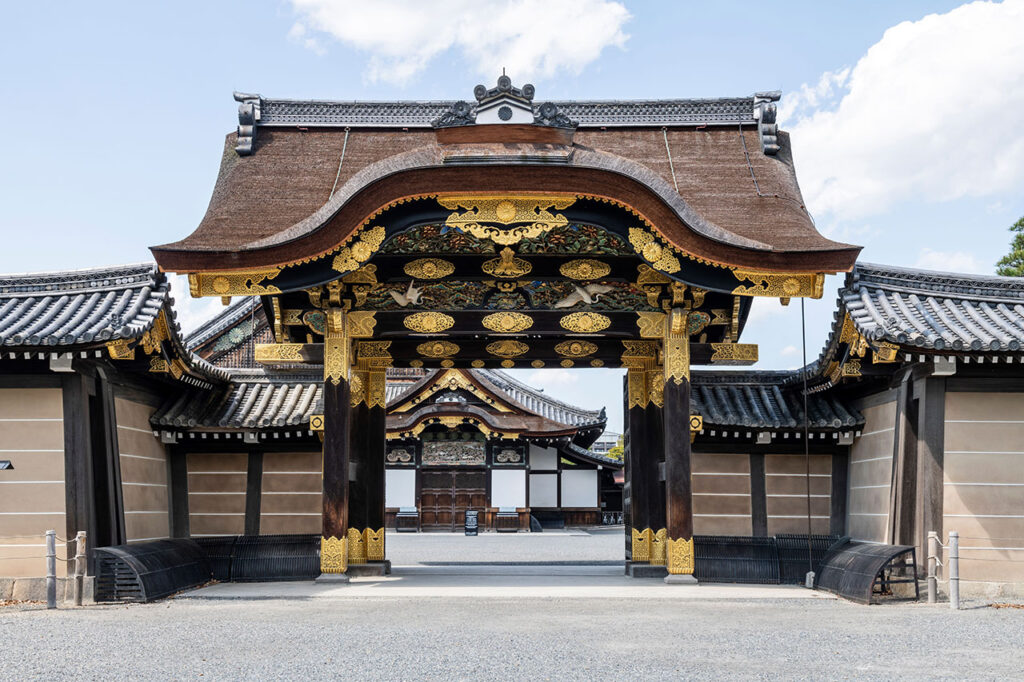

Best time to see/usually mid-November to early December
開城時間/8:45~17:00(最終閉城/16:00)
Reception Hours for Ninomaru Palace/8:45~16:10
Charge(Adults 1,300 yen, junior high and high school students 400 yen, elementary school students 300 yen (including admission to Ninomaru Palace)
Adult ¥1,000, Junior and senior high school students ¥300, Elementary school students ¥200 *Reservations required in advance.
■二の丸御殿障壁画 展示収蔵館 秋期原画公開「黒書院の秋~<黒書院>四の間」
Period/2025年10月9日(木)〜2025年12月7日(日)
Hours./9:00〜16:30(最終入館/16:45)
Charge/100円(未就学児無料)※別途、入城料が必要
■『NAKED meets 二条城 2025 観月』
Period/2025年10月31日(金)〜12月7日(日)
Hours./18:00~22:00(最終入場/21:00)
※本丸エリアへの最終入場は21:15
通常料金Monday-Thursday: 2000 yen for junior high school students and older, 1200 yen for elementary school students; Friday-Sunday and holidays: 2400 yen for junior high school students and older, 1600 yen for elementary school students *Free for pre-school children
早割チケット/中学生以上-400円、小学生-200円
※販売期間9月24日(水)~10月30日(木)
Bishamondo] was formerly known as Izumo-ji Temple, which was built in 703 to the north of the Kyoto Imperial Palace by Emperor Temmu.
The sight of Teshizaka, the stone stairway leading to the Teshimon Gate, turning bright red is a sight to behold. Even after the best season has passed, visitors can enjoy the "Shiki-Momiji", commonly called "Shiki-Momiji", scattered along "Teshizaka".
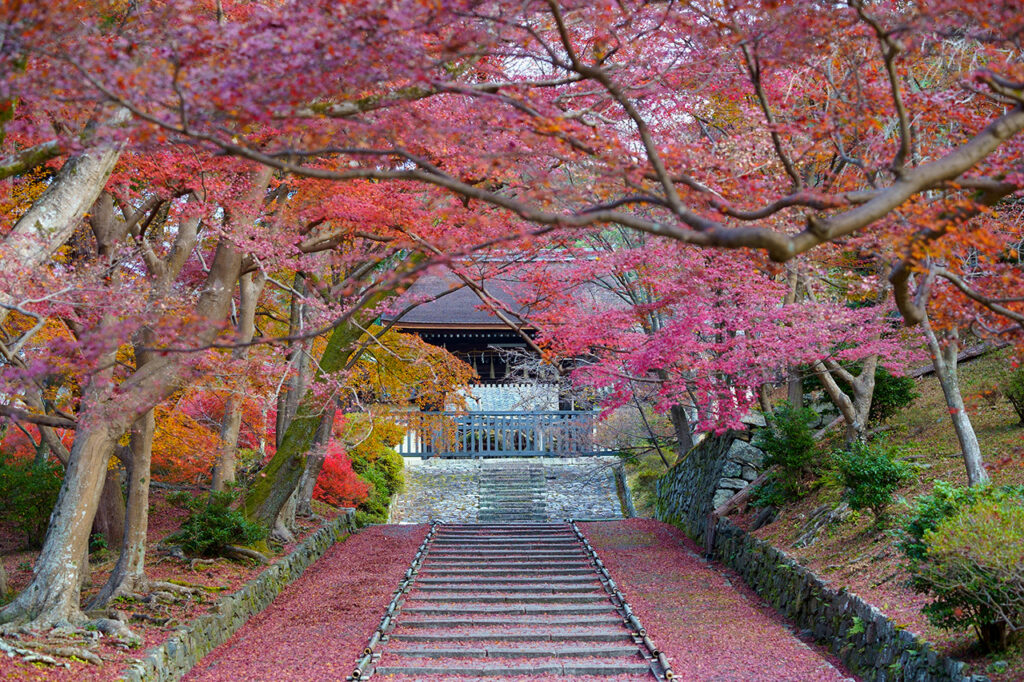

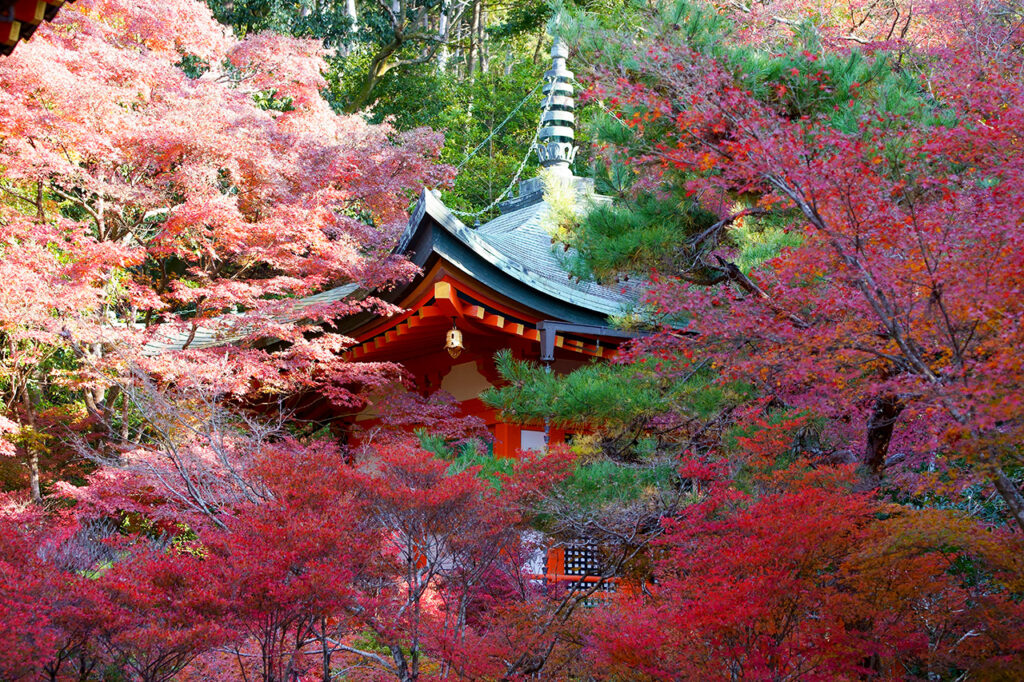

見頃/例年11月中旬~12月上旬 ※気候によって変動あり
入山時間/9:00〜17:00 ※御朱印終了16:00頃まで、拝観終了16:30
※ 冬季(12月~2月末)は9:00~16:30 ※御朱印終了15:30頃まで、拝観終了16:00
Admission fee/700 yen
Over 600 interviews per year! An order site carefully selected by the editors who knows Kyoto and Shiga.
nowOfficial LINE friend registration500 yen OFF coupon is being issued!
Distributed every Friday morning at 8:00 am! From new restaurant information to event information that we want to share with you, We deliver articles about Kyoto that are useful to know. About 20,000 people have registered.Click here to add a friend!
 News
News Feature article
Feature article Featured event
Featured event